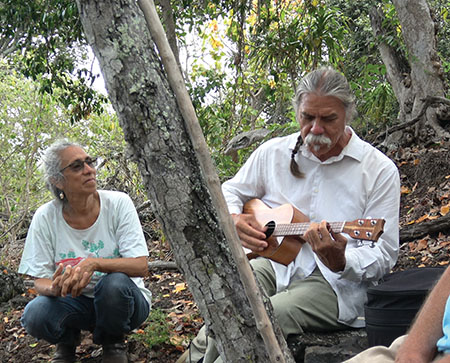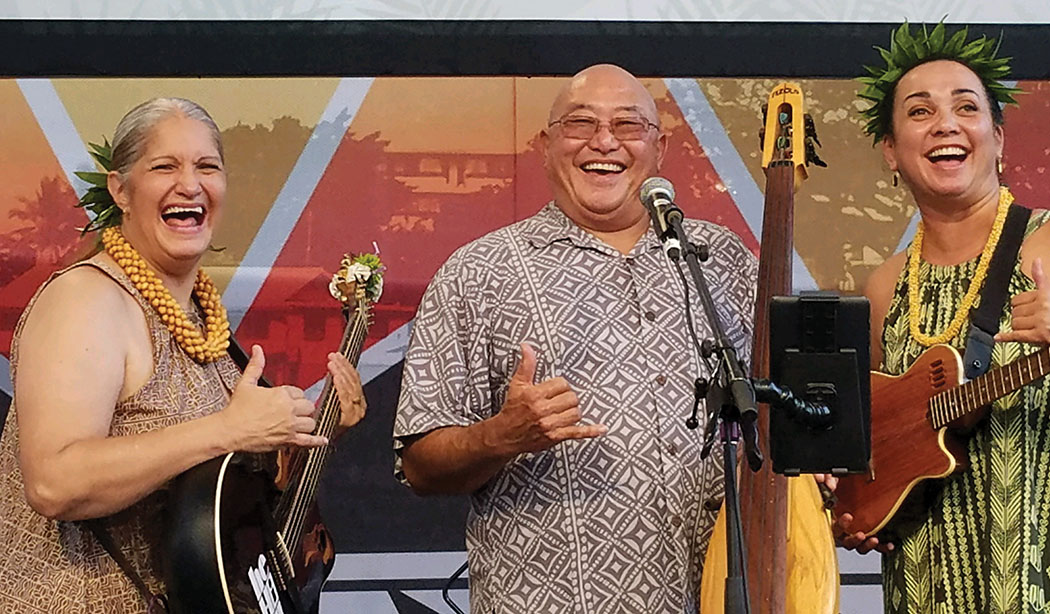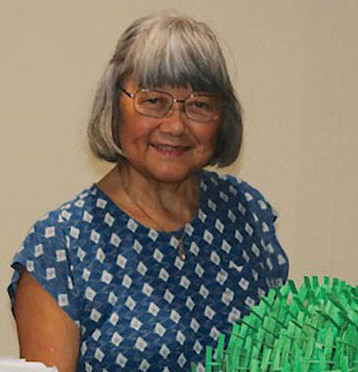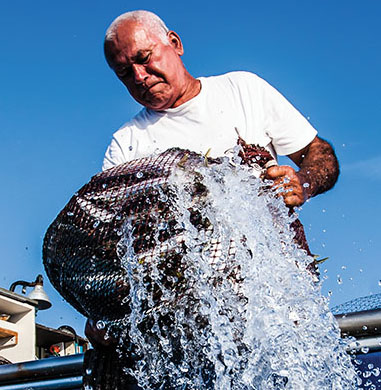
Chuck Leslie: The ‘Ōpelu Man
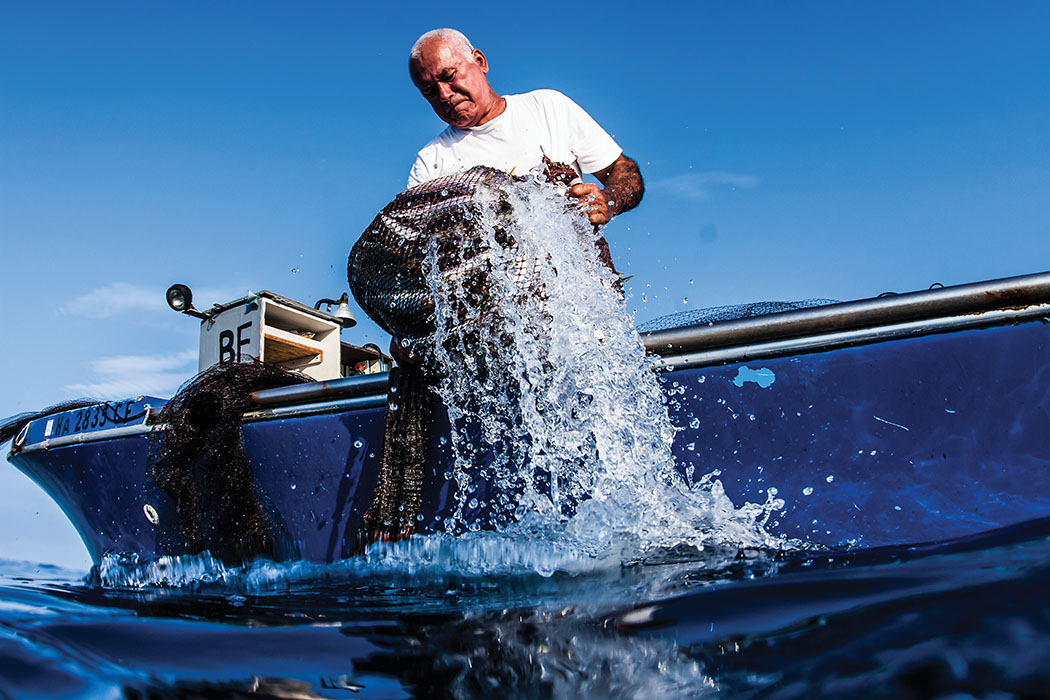
By Karen Anderson
One day in the late 1990s, third-generation Napo‘opo‘o fisherman Chuck Leslie headed north toward Keauhou in his 56-foot longlining vessel, Hana Like, when suddenly and inexplicably he passed out at the wheel, just outside of Pu‘u ‘Ohau (Red Hill) beyond Kealakekua Bay.
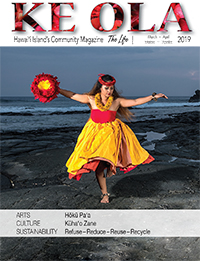
As he slumped in the captain’s chair completely blacked out, the unmanned boat swung dangerously close to shore. Several harrowing minutes transpired before he was rousted from his unconscious state by the voice of his late father, Henry “Paidy” Leslie, who seemed to be shouting at him from the same spot on the boat where he always sat.
“I didn’t feel nothing when I passed out, it was like turning off a light switch,” recalled Chuck. “The boat was headed toward the cliff. I woke up because I heard my dad’s voice in my head warning me. Another three minutes I would have hit the rocks.”
Raised in the traditional Hawaiian fishing methods, Chuck, age 77, still feels guided by the wisdom and knowledge passed down to him by his father, his grandfather and his Hawaiian ancestors on his mother’s side a thousand years before him.
Traditional Fisherman
Since age seven, Chuck has fished ‘ōpelu—a type of scad mackerel—in the waters along South Kona from Keauhou to Kauna. He utilizes an enormous handcrafted hoop net that he drops 60 to 70 feet beneath the water’s surface.
As he peers through a glass-bottom box to observe schools of ‘ōpelu gathered on the koa (fishing ground), Chuck feeds the fish with ground bait such as pumpkin, packaged in a weighted handkerchief. The hoop net is attached to the stern of the boat by eight bridles. The goal is to get the school of ‘ōpelu to enter the net and form a narrow, vertical path toward the bottom of the net.
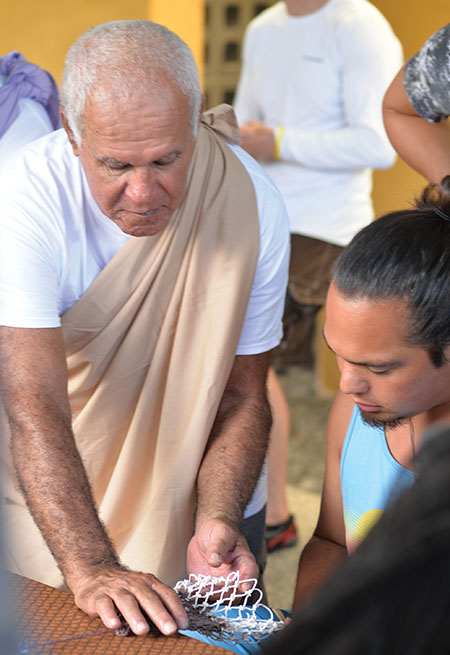
Fishing for ‘ōpelu in this manner is a dying tradition, as is the making of the net by hand, according to Chuck. Indeed, Chuck is one of the few remaining Hawaiian lawai‘a (fishermen) who still makes and maintains his own ‘ōpelu nets. He is also the last traditionally raised fisherman in his Napo‘opo‘o ‘ohana, and is one of the last fisherman in the Hawaiian Islands whose life, since the age of five, has been devoted full time to the traditional Hawaiian style practiced for centuries.
“Traditionally, you would start learning to make net as a small child before you ever get on a boat. I make all other kinds of net, too, but ‘ōpelu is the hardest net to make because the mesh is so tiny.”
The long, cone-shaped net measures 24 feet in diameter and 35 feet deep, and is held open with a flexible, round fiberglass rim known as the kuku. In old Hawai‘i, the kuku was made of ‘ūlei, a native hardwood. To make a net from scratch, Chuck stitches the net panels together by hand, a time-consuming process that can take months.
During his grandfather’s day, fishermen had to make the entire net, eye for eye, from cotton or linen. When Chuck completed his first net at age 14, it was considered his “graduation” ceremony as a true commercial fisherman. Chuck’s father taught him to build larger-diameter nets by sewing together panels made of 100 percent nylon or monofilament. The two nets he currently fishes with are approaching 40 years old.
‘Ōpelu Fishing

‘Ōpelu season takes place in Hawai‘i from August to March. Chuck fishes solo. He gets up at 1am every morning and leaves the house by 2am, trailering his 1967 Glaspro to Hōnaunau Bay four miles down the Old Government Road by truck.
Fishing by himself comes second nature to Chuck. It is where he feels most at home. Out on the open ocean in the middle of the night, Chuck has witnessed a few supernatural experiences over the years, including unexplained phenomena that disturbed his and other boats’ instruments simultaneously.
“I see lots of meteorites flying all over the place,” he said. “Satellites too. You can see a million stars in the sky at that time of night. I come back from fishing between 8am and 11am. I don’t ever need to use an alarm to wake up in the morning. It’s all in my head.”
‘Ōpelu is considered sacred to the Hawaiian people. The fish helped feed the Polynesian voyagers as they migrated to the Hawaiian Islands between 400 and 600CE. Chuck pays homage to other creatures of the sea related to the ‘ōpelu tradition, such as the kākū (barracuda) that sometimes bring schools of ‘ōpelu to the lawai‘a.
“I always share 10 to 15 pieces of ‘ōpelu with the kākū as a thank-you for not eating my net,” said Chuck. “Part of being traditional is knowing the rituals passed down from centuries. I still always toss the first two fish I catch back into the water. It’s a blessing of the net to ensure your catch.”
Fish, Fish and More Fish
Chuck knows how to fish in every style except shrimping. When he is not fishing ‘ōpelu, he catches ono, mahimahi, ‘ahi, aku, and akule. A popular local fish, ‘ōpelu measures between 8 to 12 inches in length. A best-kept secret, ‘ōpelu is tender, sweet and oily. It can be dried, fried, baked, sautéed, boiled, grilled, steamed, served as sashimi, or made into poke.
Observing subtle changes on the surface of the ocean in the distance, Chuck has an eagle eye for locating the koa of ‘ōpelu. The amount he catches depends on his orders for the day, generally around 150–200 pounds. On an average day, he can catch up to 500 pounds of ‘ōpelu, and has caught more than 1,500 pounds of ‘ōpelu in a single day. With sheer strength, he can singlehandedly hoist 250 pounds of fish up from the water and into the boat.
According to Chuck, the ‘ōpelu population is alive and well because it has been fished sustainably; however, recent government regulations now prevent the commercial sale of sun-dried ‘ōpelu, which has been a staple in the Hawaiian Islands for generations.
“Hawaiians know that when you brine fish in dry salt, it kills the bacteria. Now it has to be dried in a commercial kitchen in a dehydrator, which changes the texture and flavor and doesn’t allow for a proper brine time,” says Chuck.
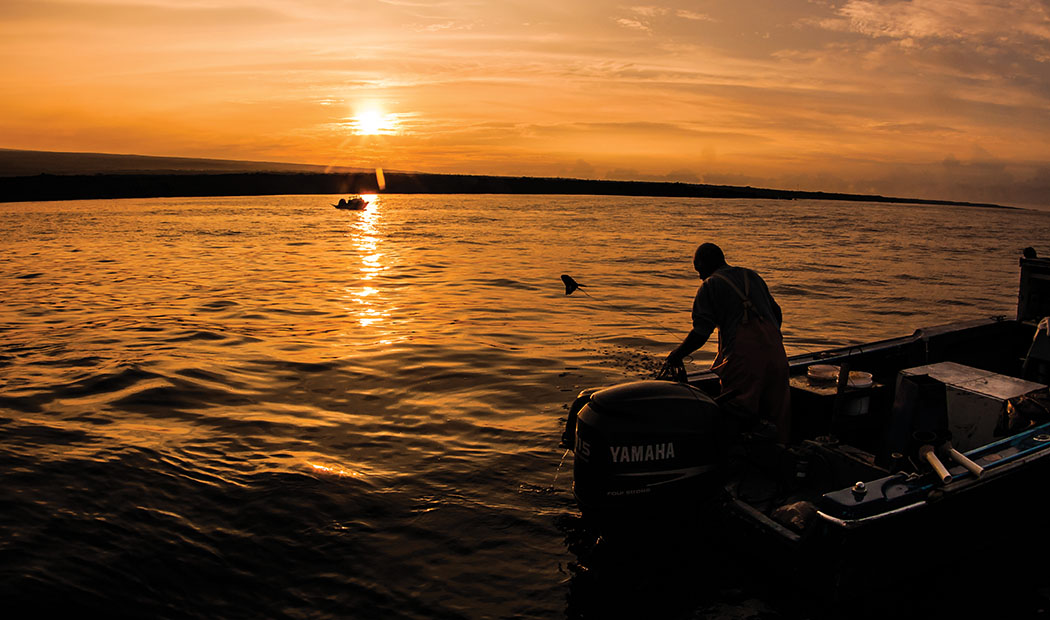
Ocean Environment Changes
In recent times, Chuck has observed changes in the ocean environment with which he is so familiar. In addition to seeing quite a bit of coral bleaching, he also sees an increase in floating plastics and rubbish. Ocean currents are getting more radical each year, he notes. “Every hour the currents change, it seems. It’s really different from what we were used to, ever since the earthquake in 2006.”
Chuck’s great-grandfather’s fishing grounds were located right offshore of Red Hill at Hokuli‘a, where the family once lived. His grandfather, Henry Leslie, Sr., and great-uncle, Robert Leslie, built the Napo‘opo‘o Wharf with the Army Corps of Engineers in 1912. Chuck recalls the time in the late 1950s when, at age 17, he was helping his grandfather on the wharf after a day of fishing akule. To everyone’s shock, the waters in Kealakekua Bay started to recede completely from the wharf all the way across the bay to Manini.
“My grandpa knew exactly what was going on and started running. It was a tsunami from an earthquake—we had no warning. The water rushed over the pier and we started running too. We could barely catch up with him, even though he was 70.”
A lifelong resident of Napo‘opo‘o Village, Chuck also vividly recalls the tsunami of 1960: “I was on the boat when it happened. The earthquake came from Chile and we had moved the boat off the mooring that night. All of a sudden, the whole island got dark from the electrical outage. We heard the pier buildings fall down at the wharf. We saw an entire house float on the water and sink in the same place as the house did after the 2011 tsunami. In 2011, I knew it was going to be big. It wasn’t a surprise, and it did the same exact thing it did in the 1960 tsunami.”
Cultural Practitioner
Recently, Chuck has become active in cultural practitioners’ networks, sharing his knowledge about traditional Hawaiian fishing methods and observations. He has also participated in cultural festivals across the island, demonstrating the net-making process and showing the dexterity it takes to work the needle.
Attending conservation conferences and gatherings with marine scientists, Chuck contributes mo‘olelo (history) about the significance of traditional practices. “Ancient Hawaiians knew the importance of kapu [conservation] and how to preserve their food sources,” he says. Chuck also serves on the West Hawai‘i Fishery Council.
On most days, however, his primary focus continues to be full-time fishing as he has done his entire life. “Fishing is hard work,” he said. “I do it because I like it. It’s what I know. To live this life, you have to have a little saltwater in your blood.” ❖
For more information: thelastopeluman.com
Mahalo Jack’s Diving Locker—Ocean Story Sponsor
